Blurred lily pound – NFT
$140.00
The Blurred Lines of Impressionism. The hazy scene of Impression, strayed from traditional landscape painting and classic, idealized beauty. The artist meant to express “other beliefs about artistic quality which might be tied to the ideologies being consolidated by the emergent bourgeoisie from which he came. “Loose brush strokes meant to suggest the scene rather than to mimetically represent it demonstrate the emergent Impressionist movement. In the wake of an emergent industrialization in France, this style expressed innovative individuality. Impressionism is taking the visual interpretation, or impression, of a specific moment in time. In art, this is done by emphasizing light, color, and shadow. Instead of painting clear lines, the artist uses blurry brush strokes to blend colors, giving us the feeling of walking through a tunnel of trees, rather than clearly painting a realistic image. He paints an impression and leaves the interpretation up to us.
The Blurred Lines of Impressionism. The hazy scene of Impression, strayed from traditional landscape painting and classic, idealized beauty. The artist meant to express “other beliefs about artistic quality which might be tied to the ideologies being consolidated by the emergent bourgeoisie from which he came. “Loose brush strokes meant to suggest the scene rather than to mimetically represent it demonstrate the emergent Impressionist movement. In the wake of an emergent industrialization in France, this style expressed innovative individuality. Impressionism is taking the visual interpretation, or impression, of a specific moment in time. In art, this is done by emphasizing light, color, and shadow. Instead of painting clear lines, the artist uses blurry brush strokes to blend colors, giving us the feeling of walking through a tunnel of trees, rather than clearly painting a realistic image. He paints an impression and leaves the interpretation up to us.
Quick Comparison
| Settings | Blurred lily pound - NFT remove | Water Lilies - NFT remove | Abstract swirls - NFT remove | Waterscapes - NFT remove | Texture Art - NFT remove | Mid-Century Modern Cityscape Painting - NFT remove |
|---|---|---|---|---|---|---|
| Name | Blurred lily pound - NFT remove | Water Lilies - NFT remove | Abstract swirls - NFT remove | Waterscapes - NFT remove | Texture Art - NFT remove | Mid-Century Modern Cityscape Painting - NFT remove |
| Image |  |  |  |  |  |  |
| SKU | ||||||
| Rating | ||||||
| Price | $140.00 | $140.00 | $141.00 | $140.00 | $141.00 | $140.00 |
| Stock | ||||||
| Availability | ||||||
| Add to cart | ||||||
| Description | The Blurred Lines of Impressionism. The hazy scene of Impression, strayed from traditional landscape painting and classic, idealized beauty. The artist meant to express "other beliefs about artistic quality which might be tied to the ideologies being consolidated by the emergent bourgeoisie from which he came. "Loose brush strokes meant to suggest the scene rather than to mimetically represent it demonstrate the emergent Impressionist movement. In the wake of an emergent industrialization in France, this style expressed innovative individuality. Impressionism is taking the visual interpretation, or impression, of a specific moment in time. In art, this is done by emphasizing light, color, and shadow. Instead of painting clear lines, the artist uses blurry brush strokes to blend colors, giving us the feeling of walking through a tunnel of trees, rather than clearly painting a realistic image. He paints an impression and leaves the interpretation up to us. | These late water lily pictures combine Impressionism with Expressionism in almost equal measure, and verge on abstract art, as the artist's attempt to capture the constantly changing natural light and colour ends up dissolving all spatial cues. As he mingles water and sky, Monet creates a peaceful meditation within a flowering, watery surround. His focus on painting as a surface covered with paint, was taken up later after World War II, by practitioners of American Expressionism, notably Jackson Pollock (1912-56). | Swirling shapes, an array of colorful patterns... The path of a flowing river cutting through fields of lush vegetation... or maybe you see pure energy and cosmic flow? There is no right or wrong answer to this question. Abstract art is open to interpretation, and that is one of the beautiful things about it. Abstract art doesn't jump out and declare, Instead, abstract art requires you to have an open, inquiring mind; you must enter the painting and see where it takes you. Abstract art gives you the freedom to explore the artwork and assign your own meaning to the piece. This intensely personal process enriches a viewer's experience of an artwork. Understanding abstract art does not come naturally for everyone. It is the kind of art that makes some people scratch their heads and say, "My 5-year old could do that." What people don't realize is that the best abstract artists have excellent drawing skills, a finely honed sense of composition, and a deep understanding of the workings of color. Most abstract artists have the ability to draw a perfectly rendered rose or a realistic portrait, but they choose not to. Instead they choose to express their creativity by creating a visual experience that is more free and unencumbered by the weight of objects. Abstract art can also make people uneasy because they don't automatically know what the art is "about" just by a cursory glance. Or they assume that because it doesn't look like anything, then it is not "about '' anything. Abstract art doesn't contain recognizable objects, so there is nothing to grasp or hold onto. This can be very confusing, even threatening, to some who are not used to assigning their own meaning to what they see before them. The truth is, abstract art is not "about nothing". At its basis, it is about form, color, line, texture, pattern, composition and process. These are the formal qualities of artwork, because they describe what the art looks like and how it is created. Abstract art is an exploration of these formal qualities. Meaning is derived from how these formal qualities are used to create a visual (and/or visceral, cerebral, emotional, etc) experience. | Turbulent water breaking ocean waves and spray. The ocean covers almost 3/4 of the world's surface. This powerful body of water hides whole mountain ranges deep beneath her surface. She can be calm and peaceful like a sheltered lagoon or violent and destructive like a tsunami sweeping over the land. Our selection of paintings with oceanic scenes features the myriad aspects of water and shore. Summer is the perfect time for individuals to visit and enjoy the marvelous scenes along the coast. In addition, the feelings and experiences felt at the beach during the summer are always fantastic. Several sceneries and experiences are seen and felt at the beach during summer. These include; the plantation along the beach and inside the sea, the animals, the waters and the people found in the beach. | About the paint: an acrylic paint that has been milled to have the body and texture of fine oils. Intensely pigmented, these colors are extraordinarily light fast and completely resistant to aging. This combined with mixed media and texture painting techniques make a wonderful piece of art for any collection. Entire painting is sealed twice for protection and a light shine. Guaranteed not to shrink, oxidize, yellow, or crack. Sand/Mud Sand mixed with paint gives a grainy feel and can be great for beach scenes and middle-ground areas as it creates a fairly subtle texture. Mud is lumpier and when mixed with paint or glue, creates thick areas of texture. I like mud because it is unpredictable – you can’t be too precise with it. Using materials you have collected from places you’ve visited gives paintings a direct connection with that place and with nature. Make sure to apply a layer or two of sealant (gesso or acrylic primer) over the sand or mud before you start your painting. | Welcome! Presenting mid 20th century modern impressionist New York cityscape, Cityscape painting flourished after World War II, already appearing in the repertory of abstract expressionist painters, for example in “City landscape” by Joan Mitchell (1955, Art Institute of Chicago) or in some audacious pictorial experiments by Willem de Kooning. On the way to abstraction we find the figure of Piet Mondrian, who, after emigrating to the United States, created his original visions of New York City, among them the famous “Broadway Boogie Woogie” (1942-43, New York, MOMA) , which the painter Robert Motherwell described with these words: “The Modern City! Precise, rectangular, squared, whether seen from above, below, or on the side; bright lights and sterilized life; Broadway, whites and blacks; and boogie-woogie; the underground music of the at once resigned and rebellious”. |
| Content | The Blurred Lines of Impressionism. The hazy scene of Impression, strayed from traditional landscape painting and classic, idealized beauty. The artist meant to express "other beliefs about artistic quality which might be tied to the ideologies being consolidated by the emergent bourgeoisie from which he came. "Loose brush strokes meant to suggest the scene rather than to mimetically represent it demonstrate the emergent Impressionist movement. In the wake of an emergent industrialization in France, this style expressed innovative individuality. Impressionism is taking the visual interpretation, or impression, of a specific moment in time. In art, this is done by emphasizing light, color, and shadow. Instead of painting clear lines, the artist uses blurry brush strokes to blend colors, giving us the feeling of walking through a tunnel of trees, rather than clearly painting a realistic image. He paints an impression and leaves the interpretation up to us. | These late water lily pictures combine Impressionism with Expressionism in almost equal measure, and verge on abstract art, as the artist's attempt to capture the constantly changing natural light and colour ends up dissolving all spatial cues. As he mingles water and sky, Monet creates a peaceful meditation within a flowering, watery surround. His focus on painting as a surface covered with paint, was taken up later after World War II, by practitioners of American Expressionism, notably Jackson Pollock (1912-56). | Swirling shapes, an array of colorful patterns... The path of a flowing river cutting through fields of lush vegetation... or maybe you see pure energy and cosmic flow? There is no right or wrong answer to this question. Abstract art is open to interpretation, and that is one of the beautiful things about it. Abstract art doesn't jump out and declare, Instead, abstract art requires you to have an open, inquiring mind; you must enter the painting and see where it takes you. Abstract art gives you the freedom to explore the artwork and assign your own meaning to the piece. This intensely personal process enriches a viewer's experience of an artwork. Understanding abstract art does not come naturally for everyone. It is the kind of art that makes some people scratch their heads and say, "My 5-year old could do that." What people don't realize is that the best abstract artists have excellent drawing skills, a finely honed sense of composition, and a deep understanding of the workings of color. Most abstract artists have the ability to draw a perfectly rendered rose or a realistic portrait, but they choose not to. Instead they choose to express their creativity by creating a visual experience that is more free and unencumbered by the weight of objects. Abstract art can also make people uneasy because they don't automatically know what the art is "about" just by a cursory glance. Or they assume that because it doesn't look like anything, then it is not "about '' anything. Abstract art doesn't contain recognizable objects, so there is nothing to grasp or hold onto. This can be very confusing, even threatening, to some who are not used to assigning their own meaning to what they see before them. The truth is, abstract art is not "about nothing". At its basis, it is about form, color, line, texture, pattern, composition and process. These are the formal qualities of artwork, because they describe what the art looks like and how it is created. Abstract art is an exploration of these formal qualities. Meaning is derived from how these formal qualities are used to create a visual (and/or visceral, cerebral, emotional, etc) experience. | Turbulent water breaking ocean waves and spray. The ocean covers almost 3/4 of the world's surface. This powerful body of water hides whole mountain ranges deep beneath her surface. She can be calm and peaceful like a sheltered lagoon or violent and destructive like a tsunami sweeping over the land. Our selection of paintings with oceanic scenes features the myriad aspects of water and shore. Summer is the perfect time for individuals to visit and enjoy the marvelous scenes along the coast. In addition, the feelings and experiences felt at the beach during the summer are always fantastic. Several sceneries and experiences are seen and felt at the beach during summer. These include; the plantation along the beach and inside the sea, the animals, the waters and the people found in the beach. | About the paint: an acrylic paint that has been milled to have the body and texture of fine oils. Intensely pigmented, these colors are extraordinarily light fast and completely resistant to aging. This combined with mixed media and texture painting techniques make a wonderful piece of art for any collection. Entire painting is sealed twice for protection and a light shine. Guaranteed not to shrink, oxidize, yellow, or crack. Sand/Mud Sand mixed with paint gives a grainy feel and can be great for beach scenes and middle-ground areas as it creates a fairly subtle texture. Mud is lumpier and when mixed with paint or glue, creates thick areas of texture. I like mud because it is unpredictable – you can’t be too precise with it. Using materials you have collected from places you’ve visited gives paintings a direct connection with that place and with nature. Make sure to apply a layer or two of sealant (gesso or acrylic primer) over the sand or mud before you start your painting. | Welcome! Presenting mid 20th century modern impressionist New York cityscape, Cityscape painting flourished after World War II, already appearing in the repertory of abstract expressionist painters, for example in “City landscape” by Joan Mitchell (1955, Art Institute of Chicago) or in some audacious pictorial experiments by Willem de Kooning. On the way to abstraction we find the figure of Piet Mondrian, who, after emigrating to the United States, created his original visions of New York City, among them the famous “Broadway Boogie Woogie” (1942-43, New York, MOMA) , which the painter Robert Motherwell described with these words: “The Modern City! Precise, rectangular, squared, whether seen from above, below, or on the side; bright lights and sterilized life; Broadway, whites and blacks; and boogie-woogie; the underground music of the at once resigned and rebellious”. |
| Weight | ||||||
| Dimensions | N/A | N/A | N/A | N/A | N/A | N/A |
| Additional information |

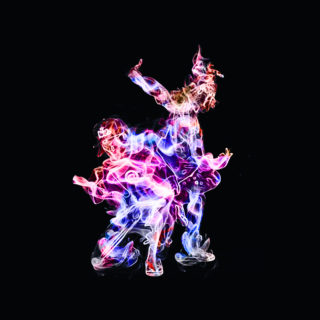

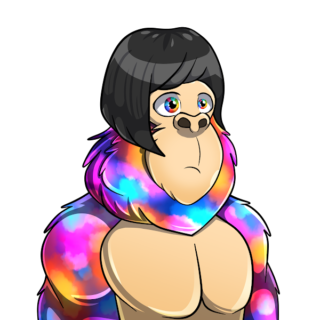
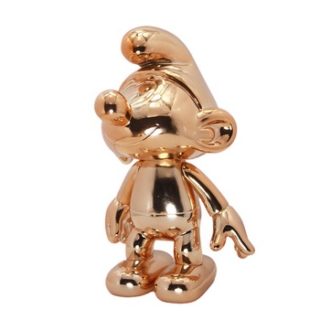


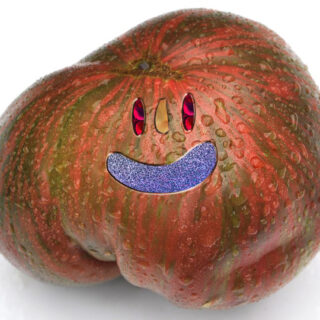
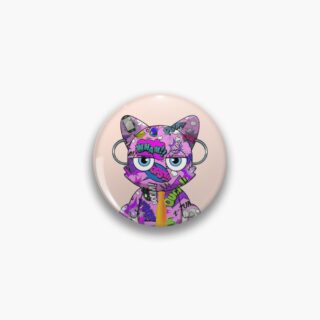
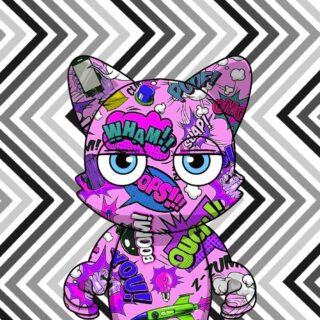






Reviews
There are no reviews yet.